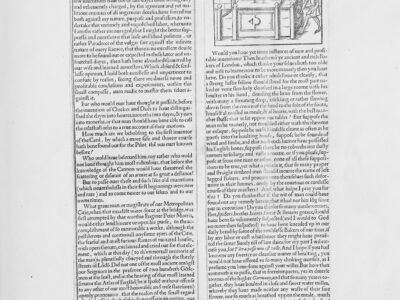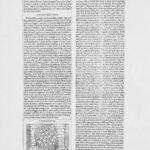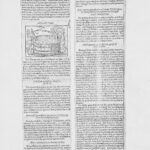Broadside of Sir Hugh Plat’s inventions (1593)
This printed broadside of 1593, A briefe apologie of certaine nevv inventions, whereof there hath bene a publicke viewe taken in London by some of her Maiesties priuie Counsell, and diuerse other gentlemen and citizens of good worship and account, with the authors excuse for not publishing the same, to the generall good of his countrey, is a unique surviving copy according to the ESTC. Comprising of three sheets, it describes several new and practical inventions by Sir Hugh Plat or Platt (1552–1608) of Lincolns Inn, which were exhibited to privy councillors and the chief citizens of London in 1592.
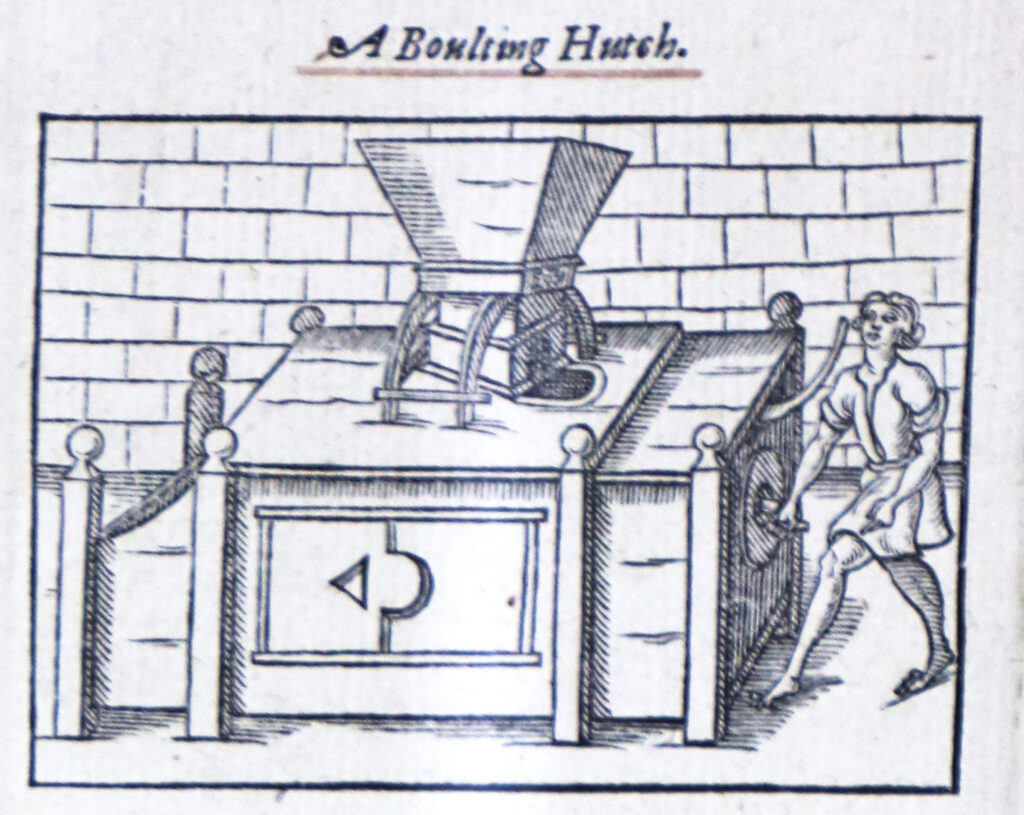
‘A boulting hutch’
The broadside features woodcuts illustrations of three of Plat’s inventions: A boulting hutch (a mechanical sifting-bin used to filter flour from bran), a new kinde of fire (coal mixed with clay and other substances, kneaded into balls), and a portable pumpe (a transportable water pump easily operable by one man, dispensing 5-6 tonnes of water per hour).
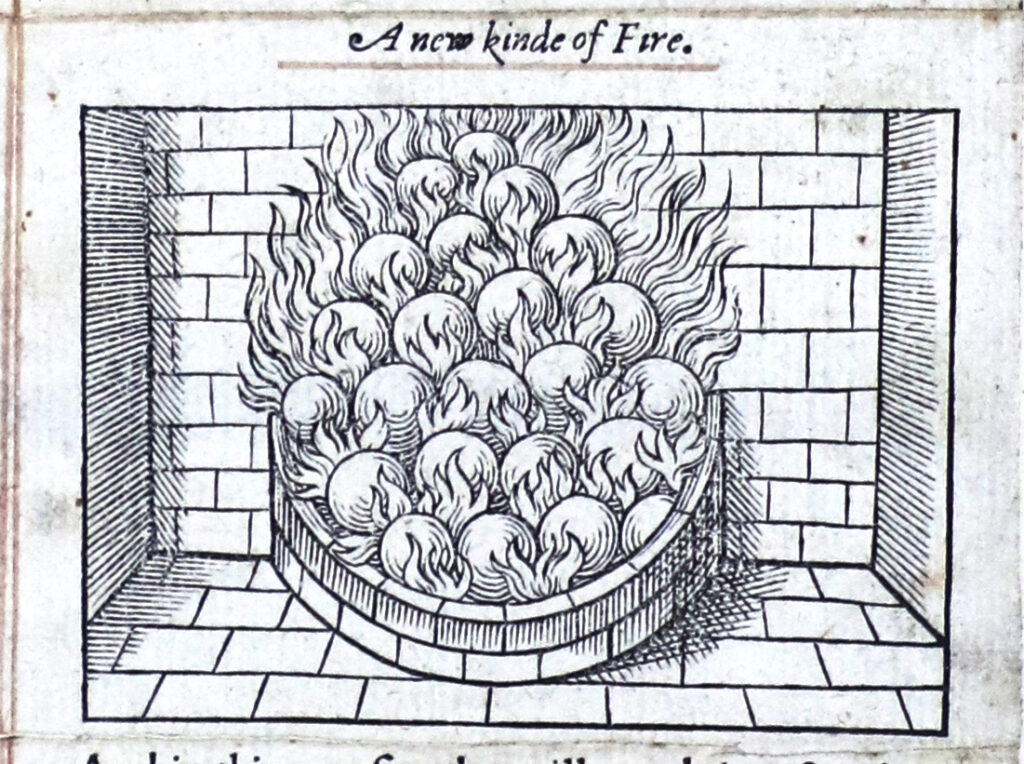
‘A new kinde of fire’
Other inventions include a rain coat: a light garment and yet sufficient against all rainie weather, a long-life foodstuff to be carried on sea voyages: a wholesome and lasting victuall for the Navie, and a fire-retardant wooden tub that could hold 30 gallons: a woodden vessel to boyle in.
Plat’s writings about his inventions were aimed at the intelligent layperson (both men and women), communicated in English, and described clearly and freely for the common good.
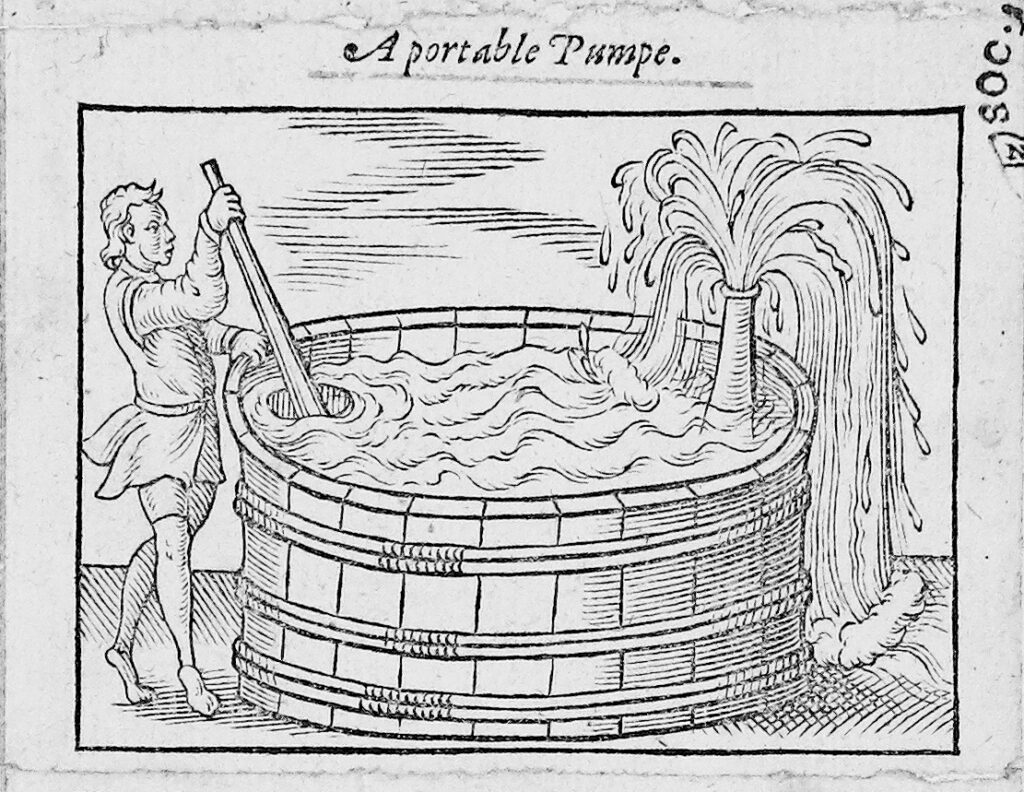
‘A portable pumpe’
His most significant work listed 103 experiments: The jewell house of art and nature, containing divers rare and profitable inventions, together with sundry new experiments in the art of husbandry, distillation, and moulding, faithfully and familiarly set downe, according to the authors owne experience (1594). With a great interest in natural sciences in their broadest sense, Plat’s experiments and inventions covered an array of fields, including mechanics, physic and alchemy, chemistry and metallurgy, cultivation in gardens and orchards, agriculture, and domestic economy. He published a successful household book for women, Delights for Ladies (1600), which included recipes for preserving fruits, methods of distilling, and the blending of perfumes, hair dyes and other beautify treatments. As recognition for his services as an inventor, Plat was knighted by James I at Greenwich on 22 May 1605.
His later life and works in particular were dedicated to agriculture and gardening, and he corresponded widely across England with others who were similarly passionate. He carried out horticultural experiments on various soils, including at his estate near St Albans, and gardens in St Martin’s Lane in London and at his main residence in Bethnal Green, where he successfully grew grapes for wine-making. In 1608 he published his most notable work on gardening: Floraes Paradise, which detailed all necessary activities for cultivation and soil preparation, as well as recipes using garden and orchard produce. Plat died in late October or early November 1608. He was recognised by later writers including Walter Harte in his Essays on Husbandry (1764) as the most ingenious husbandman of his age.
The broadside in the Society’s Library is part of the Lemon Broadsides collection (miscellaneous broadsides presented by Thomas Hollis in 1757, and later catalogued and arranged chronologically by treasurer Robert Lemon in 1866). Many of our early broadsides published up to the mid-17th century are unique copies. Around 130 are digitised in high-quality and available to view with transcripts via the freely-accessible EBBA (English Broadside Ballad Archive).
